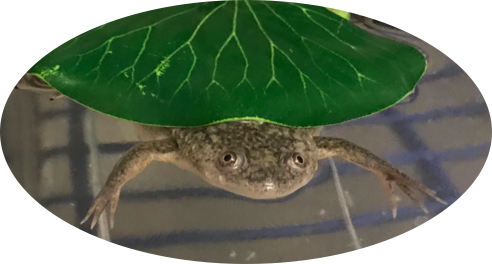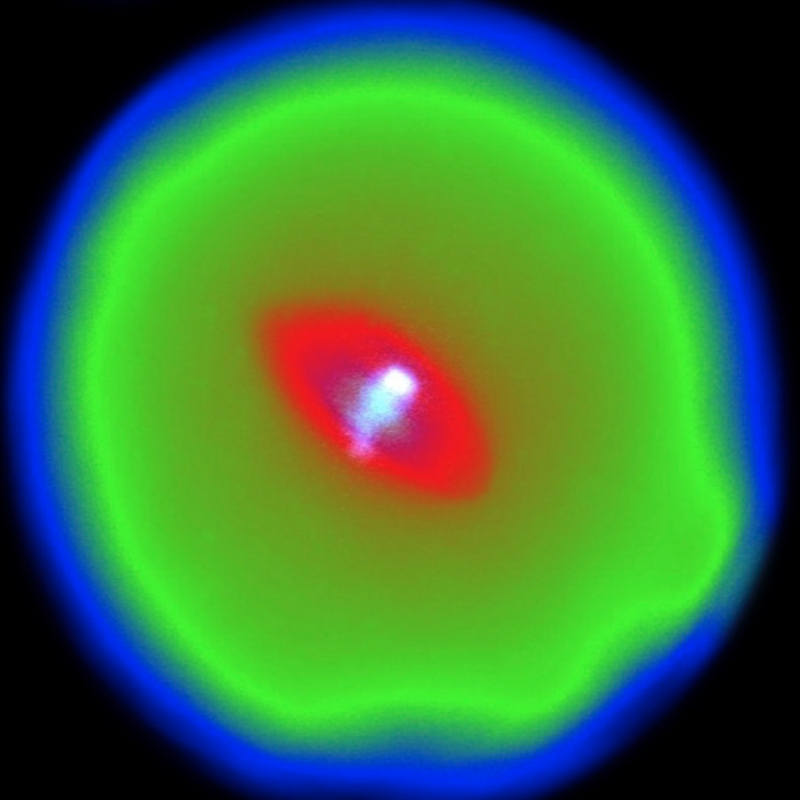


The Brownlee laboratory explores the interaction between two fundamental domains of the cell: the plasma membrane and the cytoplasm. The lab’s interdisciplinary approach leverages the powerful Xenopus system in which cytoplasmic extracts prepared from unfertilized frog eggs can reconstitute various cellular processes, such as nuclear and mitotic spindle formation and function, in vitro. To study the interaction between the plasma membrane and cytoplasm as a function of cell size, we have adapted a method of encapsulating DNA-containing cytoplasm in various lipid mixtures using microfluidics. This unique approach published recently (Brownlee and Heald, Cell. 2019), has allowed for the discovery of a novel sensing mechanism of the cellular surface area to volume ratio to regulate organelle size scaling. This pathway is conserved in vivo during frog development as well as in human cells. This is particularly relevant to our understanding of cancer pathology as loss of certain tumor suppressors or overexpression of oncogenes frequently results in organelle size deregulation and can be used diagnostically.



Current research utilizes microfluidic approaches while also employing the spatial-temporal control obtained through the use of optogenetics. This research will provide new insight into the underlying principles regulating such fundamental processes as mitotic spindle positioning, cell polarity determination, ciliogenesis, axonogenesis and actin cortex formation. These processes are essential for development and viability and defective in many human diseases such as cancer.





Chris developed an interest in applying genetic and biochemical approaches to fundamental cell biology questions as a graduate student in Gregory Roger’s lab at the University of Arizona College of Medicine, culminating in a doctorate in the area of Cellular and Molecular Medicine. As an NSF Graduate Research Fellow, he sought to answer the question of how a single “mother” centriole gives birth to a single “daughter” centriole only once per cell cycle. Using Drosphila and human cell culture, he studied how this process can be corrupted, contributing to chromosome mis-segregation and tumorigenesis. He identified a phosphatase, PP2A-Twins, which is integral in maintaining the careful balance of phosphorylation and dephosphorylation of the master regulator of centriole duplication, the kinase Plk4. This work also identified the mechanism by which a tumorigenic virus, SV40, subverts this pathway leading to centriole amplification and tumorigenesis. In his postdoctoral research, within the lab of Rebecca Heald at the University of California – Berkeley, he studied the mechanisms by which cells regulate organelle size scaling using Xenopus and human cell culture. This research was supported by an American Cancer Society Fellowship and led to Chris receiving the MCB Postdoctoral Award for Research in 2018. Chris decided to join the faculty at the Stony Brook University School of Medicine 2019.
2025
Mosqueda N, Sutton PJ, Brownlee CW. Importin α Regulates Ciliogenesis and Cilia Length With Implications for Xenopus Nephrogenesis. J Cell Sci. 2025 Sep 29;. doi: 10.1242/jcs.264441.
Sutton PJ, Mosqueda N, Brownlee CW. Palmitoylated importin α regulates mitotic spindle orientation through interaction with NuMA. EMBO Rep. 2025 May 27;. doi: 10.1038/s44319-025-00484-8.

Pena GE, Zhou X, Slevin L, Brownlee C, Heald R. The NLS3 Motif in TPX2 Regulates Spindle Architecture in Xenopus Egg Extracts. Cytoskeleton (Hoboken). 2025 May 6. doi: https:/doi:10.1002/cm.22034.
Xue Z, Sutton PJ, Haley JD, Brownlee CW, Demple, B. Pathways and Products of Base Excision DNA Repair in Xenopus laevis Eggs. Nucleic Acids Res. 2025 (Accepted).
2020
Miller, K. E., Brownlee, C.W., & Heald, R. The power of amphibians to elucidate mechanisms of size control and scaling. Experimental Cell Research. 2020, July 1. DOI: 10.1016/J.YEXCR.2020.112036.
2019
Brownlee, C.W., Heald, R. Importin α partitioning to the plasma membrane regulates intracellular scaling. Cell. February 7, 2019. DOI: 10.1016/j.cell.2018.12.001.
2018
Brownlee, C.W., Heald, R. The Incredible Shrinking Spindle. Developmental Cell. 2018, May 21. DOI: 10.1016/j.devcel.2018.05.007.
Tiffany A. McLamarrah, Daniel W. Buster, Brian J. Galletta, Cody J. Boese, John M. Ryniawec, Natalie Ann Hollingsworth, Amy E. Byrnes, Brownlee, C.W., Kevin C. Slep, Nasser M. Rusan, Gregory C. Rogers. An ordered pattern of Ana2 phosphorylation by Plk4 is required for centriole assembly. The Journal of Cell Biology. 2018, March 1. DOI: 10.1083/jcb.201605106.
2014
Galletta, B. J., Guillen, R. X., Fagerstrom, C. J., Brownlee, C. W., Lerit, D. a, Megraw, T. L., Rogers, G.C. Rusan, N. M. Drosophila Pericentrin requires interaction with Calmodulin for its function at centrosomes and neuronal basal bodies, but not at sperm basal bodies. Molecular Biology of the Cell. 2014, September 15. DOI:10.1091/mbc.E13-10-0617.
2012
Brownlee C.W., Rogers GC. Show me your license, please: deregulation of centriole du-plication mechanisms that promote amplification. Cell Mol Life Sci. 2012, Aug 15. DOI: 10.1007/s00018-012-1102-6.
2011
Brownlee C.W., Klebba JE, Buster DW, Rogers GC. The Protein Phosphatase 2A regulatory subunit Twins stabilizes Plk4 to induce centriole amplification. The Journal of Cell Biology. 2011, October 10. DOI: 10.1083/jcb.201107086.